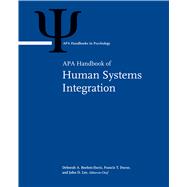A central tenet of this book is that it is not sufficient to examine items independently — one must go beyond a focus on individual workers, tools, tasks, or environments. Thus, the handbook is a "how to" resource that reflects the state-of-the-art on work in this enterprise.
The book's opening chapters define what is meant by human systems integration, provide a historical overview of the field, and describe a set of case studies to which many chapter authors apply their expertise.
Succeeding chapters reflect on the physical, physiological, perceptual, cognitive, and organizational considerations that affect human systems performance and discuss how the knowledge base of the field has been applied in various domains.
The remaining chapters describe the trade-offs associated with integrating individual considerations and systems performance, discussing how a decision that optimizes performance in one area (e.g., display design) may entail a reduction of performance in another area (e.g., staffing or personnel selection).






